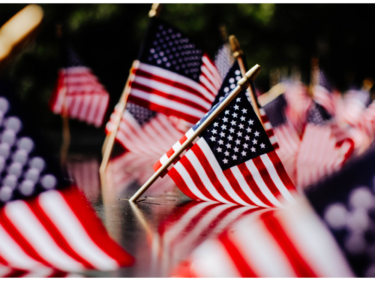Tariffs and Their Global Impact: A Note from the Desk of our Chief Economist
On 2 April 2025, the US Administration announced a set of tariff increases, bringing the US back to levels of protectionism last seen in the Great Depression era. Subsequent days have seen many tariffs postponed, while others increased, so the situation remains fluid.
This shifting trade policy is set to have far-reaching implications for the global economy, affecting various sectors and countries differently. As businesses and policymakers navigate this new landscape, understanding the potential outcomes is crucial.
In light of these developments, we are actively incorporating the impact of the tariffs into our forecasts, to be updated 15th April.
Here’s a breakdown of the key insights from the latest research:
A Return to Protectionism
The newly announced tariffs are more severe than previously anticipated, with rates exceeding those modelled in our earlier scenarios.
Varied Global Impact
The effects of these tariffs will not be uniform across the globe. Different countries and regions will experience varying levels of impact, with some economies more vulnerable due to their reliance on exports to the US. As nations begin to announce retaliatory measures, the landscape of global trade is poised for upheaval.
See how Oxford Economics can help you navigate the tariff changes
Get in touchIf these tariffs remain in place, we can expect a substantial downgrade in growth forecasts for both the US and the global economy. While a recession may be avoided, world trade volumes are likely to suffer significantly, affecting economic performance through 2025 and beyond.
- China: The tariffs represent a significant challenge for China, likely prompting a fiscal response that may not fully counteract the negative economic impacts.
- Eurozone: The Eurozone could see a reduction in GDP growth by 0.2 to 0.3 percentage points due to the new tariffs. While a full retaliation from the EU is not anticipated, targeted responses may emerge, affecting investment and economic stability.
- UK: The UK’s growth forecast has been downgraded, with expectations now below 1% for this year. The primary impact will stem from weakened US and global demand, alongside heightened trade policy uncertainty.
- Asia-Pacific: Countries like Vietnam, South Korea, and Taiwan are particularly vulnerable due to their trade dependencies. Conversely, India and the Philippines may be better insulated from the tariff shocks.
- Latin America: While the region is largely spared from the brunt of these tariffs, the overall impact on growth forecasts cannot be overlooked. With a minimum 10% tariff applied to most countries and a generally low dependence on US exports, the effects may be limited but still significant.
Sector-Specific Consequences
The implementation of these tariffs will have sector-specific repercussions, dampening sentiment across various industries. Our initial assessments suggest that while a global recession might be avoided, the economic fallout could still be severe, particularly for sectors heavily reliant on trade.
Practical Implications
Businesses should prepare for heightened uncertainty and potential shifts in market dynamics. Understanding the specific impacts on your sector will be vital for strategic planning and risk management.
For a comprehensive analysis of these tariffs and their implications, please view our latest tariffs research and upcoming webinars.
Updated 14 April 2025.
For latest reports on trade and tariffs, please visit our topic page.
Upcoming Webinars

マクロ経済から見る産業へのトランプ関税インパクト
今次セミナーでは、トランプ関税が経済に及ぼす影響について、マクロ経済学を用いた産業分析の観点から紐解いていきます。急速に変化する経済・政策環境の中では、目先の動きにとらわれるのではなく、経済構造に基づいた分析を通じて大局的な視点を持ちリスク管理を行うことが重要となります。マクロ経済調査会社である弊社の強みを活かしたトップダウンで一貫性のある分析手法により、ボトムアップ型の分析では捉えきれない要因まで包括的にカバーすることが可能になります。関税からくる直接的な影響だけではなく、複雑に絡み合う国際的なサプライチェーンを通じた間接的なインパクトを含め、様々な産業の中から脆弱性の高い産業からそうでない産業まで、波及経路も含めて仔細に説明します。
Find Out More
LatAm shows resilience to U.S. Tariffs
Economic growth across most of the region has been mostly undisturbed by the start of US tariffs. Resilient domestic demand and high commodity prices suggest economic stability will continue in most countries, except in Mexico, where the impact of trade uncertainty and fiscal consolidation have temporarily stalled the economy. Inflation shows relatively different dynamics due to domestic idiosyncrasies, but most countries are exposed to the same international shocks, which could justify greater caution in the monetary normalization process by central banks.
Find Out More
Could shifting US economic fissures turn into fault lines
The economy is being tested by higher tariffs, enormous policy uncertainty, geopolitical tensions and high interest rates. There are some fissures in the labor market, but layoffs remain low and nominal wage growth continues to outpace inflation. Consumers spending remains bifurcated as is the landscape for businesses. In this webinar we will discuss our latest economic outlook and how tariffs, immigration, fiscal policy and geopolitical events are expected impact growth, inflation, unemployment, interest rates and how these factors could steer the economy off course.
Find Out More
Through the TradePrism: Making Sense of Global Trade Disruptions
Powered by insights from our TradePrism forecasting platform, this webinar will explore recent developments, changes to the near- and long-term trade outlook and how businesses can navigate the increasingly fragmented world.
Find Out MoreTags:

